How to Actually Integrate AI into Your Existing GTM Workflows

How to Actually Integrate AI into Your Existing GTM Workflows
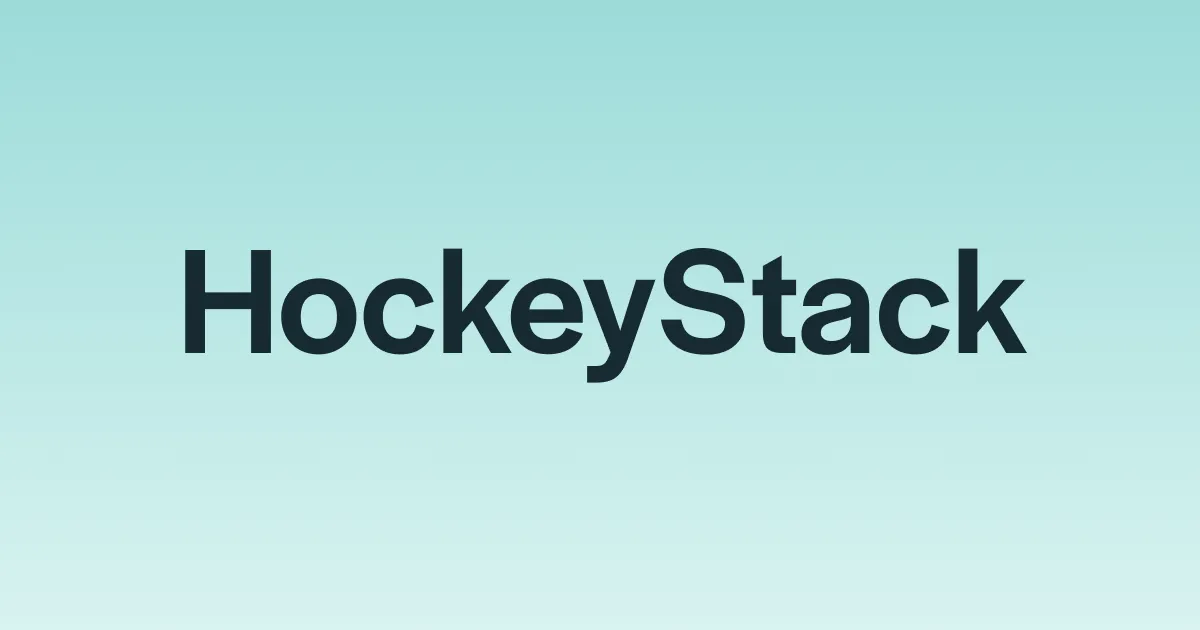
You’ve done it. You bought the shiny new AI tool that everyone is talking about. Your team was excited, they used it for a week, and now... It's “sitting” on the shelf, collecting dust. Your reps have gone back to their old, comfortable workflows, and you're left with another expensive subscription that doesn't connect to anything.
Sound familiar?
This is the most common failure point for AI adoption in GTM. The problem isn't the AI tool itself; it's the lack of a real integration strategy. We've spent a decade building a "Franken-stack" of disconnected point solutions, and just throwing a few AI-powered tools on top of that mess isn't a strategy but a recipe for more chaos.
In this guide, we'll provide a practical playbook for integrating AI into your GTM workflows. This isn't about buying more tools; it's about wiring the ones you have into a single, efficient engine that actually drives revenue.
Why Bolting On AI to a Broken Process Fails
The most common mistake GTM leaders make is treating AI like a magic patch for a fundamentally broken process. You have a leaky pipeline, so you buy an AI lead scoring tool. Your sales reps are inefficient, so you buy them an AI email writer. You're essentially bolting on a powerful new feature and hoping it fixes the underlying problem.
This approach is doomed to fail.
It's like adding a powerful jet engine to a horse-drawn carriage. The engine is impressive, but the underlying system is still slow, disconnected, and made of wood. You haven't built a jet – you've just created a faster, more expensive way to crash.
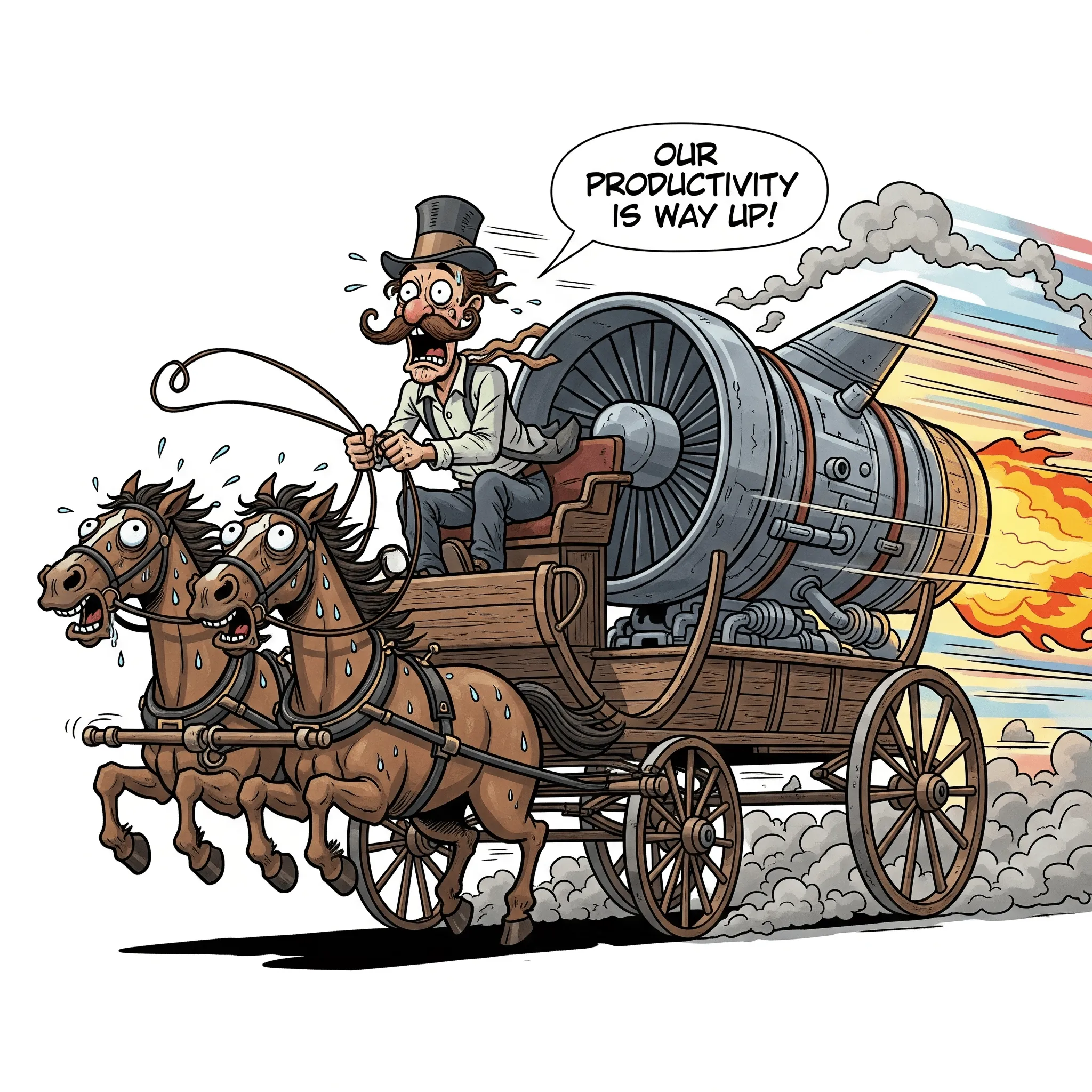
When you bolt on an AI tool to an existing, siloed workflow, you don't fix the friction; you just highlight it.
- Your new AI lead scorer identifies great leads, but the manual handoff process to sales is still so slow that the leads go cold.
- Your AI email assistant helps reps write better emails, but they're still sending them to the wrong prospects because your marketing and sales data aren't connected.
The result is always the same: more complexity, a frustrated team that has to manage yet another disconnected tool, and zero real ROI. You haven't solved your GTM problems; you've just added a new, expensive one.
The Right Approach: Think Upgrade, Not Add-On
If bolting on AI is the path to failure, what's the alternative? The right approach requires a fundamental shift in thinking. Don't think of AI as another add-on to your already bloated tech stack. Think of it as a catalyst to upgrade your entire GTM motion.
An add-on is a temporary fix. An upgrade is a permanent improvement to the underlying system.
This isn't about finding a place to plug in a cool new AI feature. It's about looking at your existing workflows, identifying the points of greatest friction—the manual data handoffs, the leaky pipeline stages, the time-wasting tasks—and using AI to re-architect that process from the ground up.
The difference is simple but profound:
- An add-on approach asks: "How can we use AI to make our process a little bit faster?"
- An upgrade approach asks: "How can we use AI to build a new, intelligent process that eliminates the friction entirely?"
It's the difference between taping a calculator to your old paper map versus upgrading to a real-time GPS. One is a clumsy patch; the other is a complete transformation that makes you smarter, faster, and more adaptable. This is the mindset you need to bring to your go-to-market strategies to get real value from AI.
Learn more → What is GTM AI?
A 4-Step Playbook for Integrating AI into Your GTM Workflows
Integrating AI sounds like a massive, intimidating project. It's not. The key is to avoid trying to boil the ocean. A successful integration is a disciplined, step-by-step process focused on solving one real problem at a time.
Here is a realistic playbook for getting it done.
Step 1: Map Your Workflows (and Find Where They Bleed)
You can't fix a problem you can't see. Before you even think about buying an AI tool, you need a brutally honest map of your current GTM motion. The goal isn't to create a pretty flowchart for a slide deck; it's to find the points of friction where you're leaking time, money, and pipeline.
How to do it:
- Get your marketing, sales, and RevOps leaders in a room with a whiteboard.
- Track the entire journey of a lead, from the first marketing touch to a closed-won deal. Ask the hard questions at each handoff point: Who is responsible? What data is transferred? How long does it take? Where do things get stuck?
- Focus on finding the biggest bottlenecks. Common culprits include the MQL-to-SQL handoff, the manual lead enrichment process, or the follow-up sequence after a demo.
✏️ Putting it into practice: Your map reveals that after marketing generates a "lead" from a webinar, it sits in a list for 24 hours before a RevOps person manually cleans and imports it into the CRM. By the time an SDR gets it two days later, the lead is ice-cold and has no memory of the webinar. This is a major point of friction and revenue leakage.
💡PRO TIP: HockeyStack’s buyer journey view does this automatically. It maps out every single touchpoint for every account, instantly showing you the messy, non-linear reality of your current GTM motion and highlighting the gaps where your workflows are broken.

Step 2: Pick One Fight You Know You Can Win
Don't try to transform your entire GTM engine at once. It’s simply impossible. The key to successful AI integration is to build momentum. Start with one, high-impact workflow where you can get a quick, undeniable win. This builds trust with your team and gets them excited for what's next.
How to do it:
- Look at your friction map from Step 1. Choose a bottleneck that is both painful and easily measurable.
- Good starting points for a first AI project include:
- AI-powered lead prioritization (to fix the MQL problem).
- Automated prospect research (to save SDRs hours of manual work).
- Proactive churn risk alerting (to help customer success teams get ahead of problems).
- Clearly define what success looks like. For example: "We will reduce the time from a high-intent signal to the first sales follow-up from 48 hours to under 30 minutes."
💡 HOW TO GET STARTED: Use an AI analyst like Odin to analyze your historical data and find the biggest opportunity. You can ask it, "Which stage of our funnel has the biggest drop-off in conversion rates?" to help you decide which workflow to upgrade first.
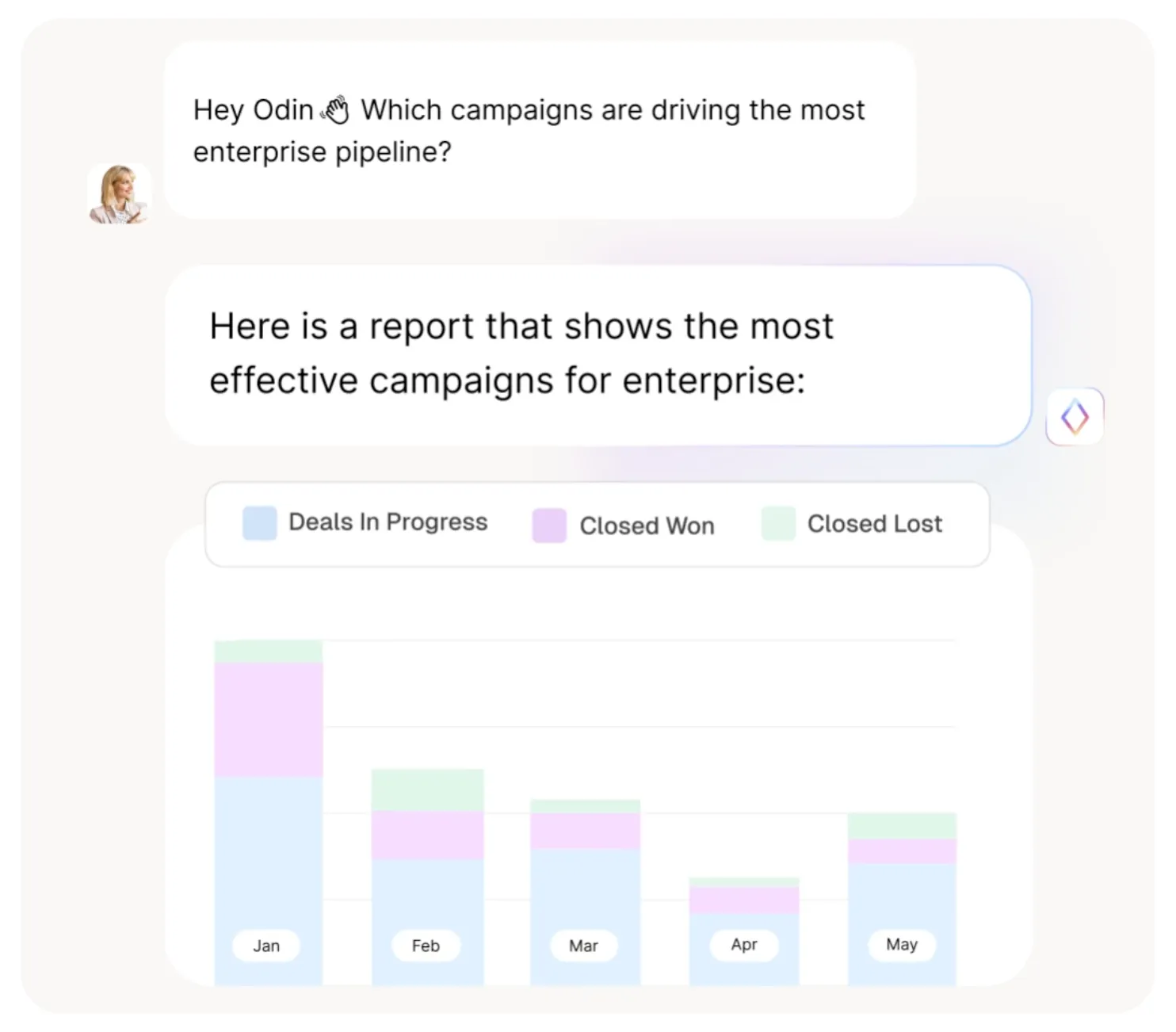
Step 3: Design the New Playbook
Now, you re-architect the process. This isn't about just doing the old workflow faster; it's about designing a new, smarter workflow that is only possible with AI. This is also where you make the critical decision: do you try to stitch together multiple point solutions, or use a unified platform?
How to do it:
- Whiteboard the new, ideal workflow. What is the trigger signal? What intelligence does the AI provide? What actions are automated?
- Decide on your engine. A collection of specialized AI tools can work, but often creates new integration headaches. A unified GTM AI platform is designed to be the central "if-this-then-that" engine for your entire GTM motion, making this step much simpler.
✏️Putting it into practice: For our lead handoff workflow, the new playbook is:
- Trigger: An account matches our ICP and visits the pricing page.
- Intelligence: The AI scores the account's intent as "high."
- Action: A GTM workflow instantly creates an opportunity in Salesforce, alerts the rep in Slack with personalized talking points, and adds the account to a marketing air-cover campaign.
💡PRO TIP: This is what HockeyStack's GTM Workflows are built for. You can build these complex, cross-functional plays with a simple, no-code interface, using insights from Odin as the trigger and orchestrating actions across your entire stack. Explore our library of workflows.
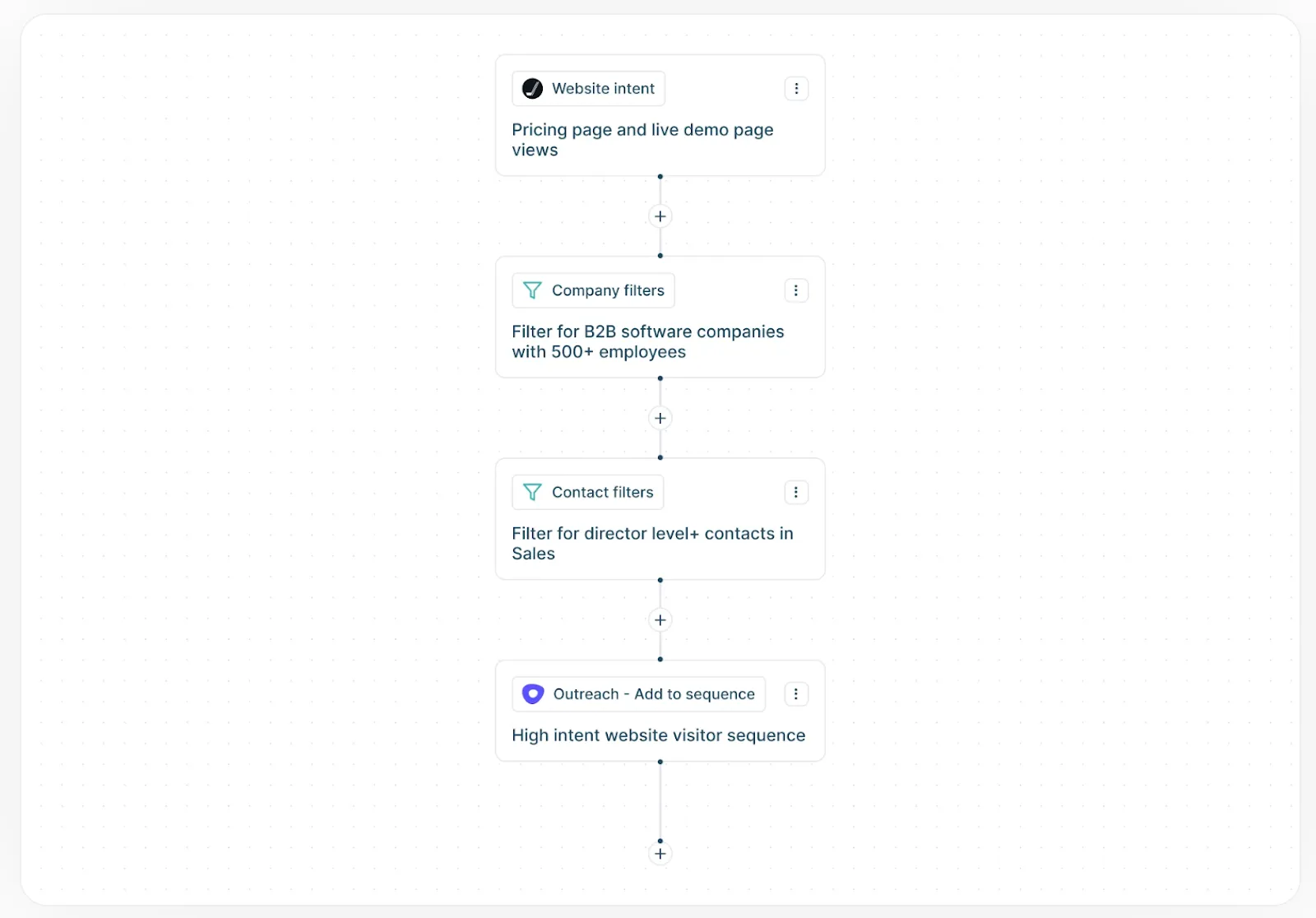
Step 4: Execute, Measure, and Evangelize
The final step is to launch your new workflow, track the results, and turn your success into an internal case study for the rest of the organization. This is how you overcome inertia and drive company-wide adoption.
How to do it:
- Launch your new workflow with a small pilot group of reps.
- Track the success metric you defined in Step 2. Is the lead-to-follow-up time down? Are conversion rates for the AI-prioritized leads higher?
- Turn your pilot users into champions. Get them to share their success stories in team meetings. Hard data and peer validation are the most powerful tools for driving change.
💡BONUS TIP: Use a platform with transparent dashboards that make it easy to track and share the results of your new workflow. When the entire company can see the direct impact on pipeline and revenue, it's easy to get buy-in for your next AI integration project.
Automate Your Entire GTM Playbook with HockeyStack Workflows

The truth is, most of your GTM motion is a series of repetitive, manual tasks that are slow, prone to error, and keep your team from focusing on what matters. The handoff between marketing and sales, the research before an outreach, the constant CRM updates—it's a massive drain on your resources.
HockeyStack's GTM workflows are designed to put your entire pipeline-building process on autopilot.
This isn't just simple "if-this-then-that" automation. It's a powerful GTM orchestration engine that allows you to build and automate your most effective plays from start to finish. Powered by Nova AI, you can design workflows that:
- Automatically find the right accounts based on real-time intent signals and unified data from across your entire stack.
- Use AI to do the research, enriching accounts with the latest information and identifying the right people to contact.
- Instantly qualify leads based on your ideal customer profile and their recent behavior.
- Sync all this enriched data seamlessly to your CRM and other tools, ensuring your GTM teams are always working with the most up-to-date information.
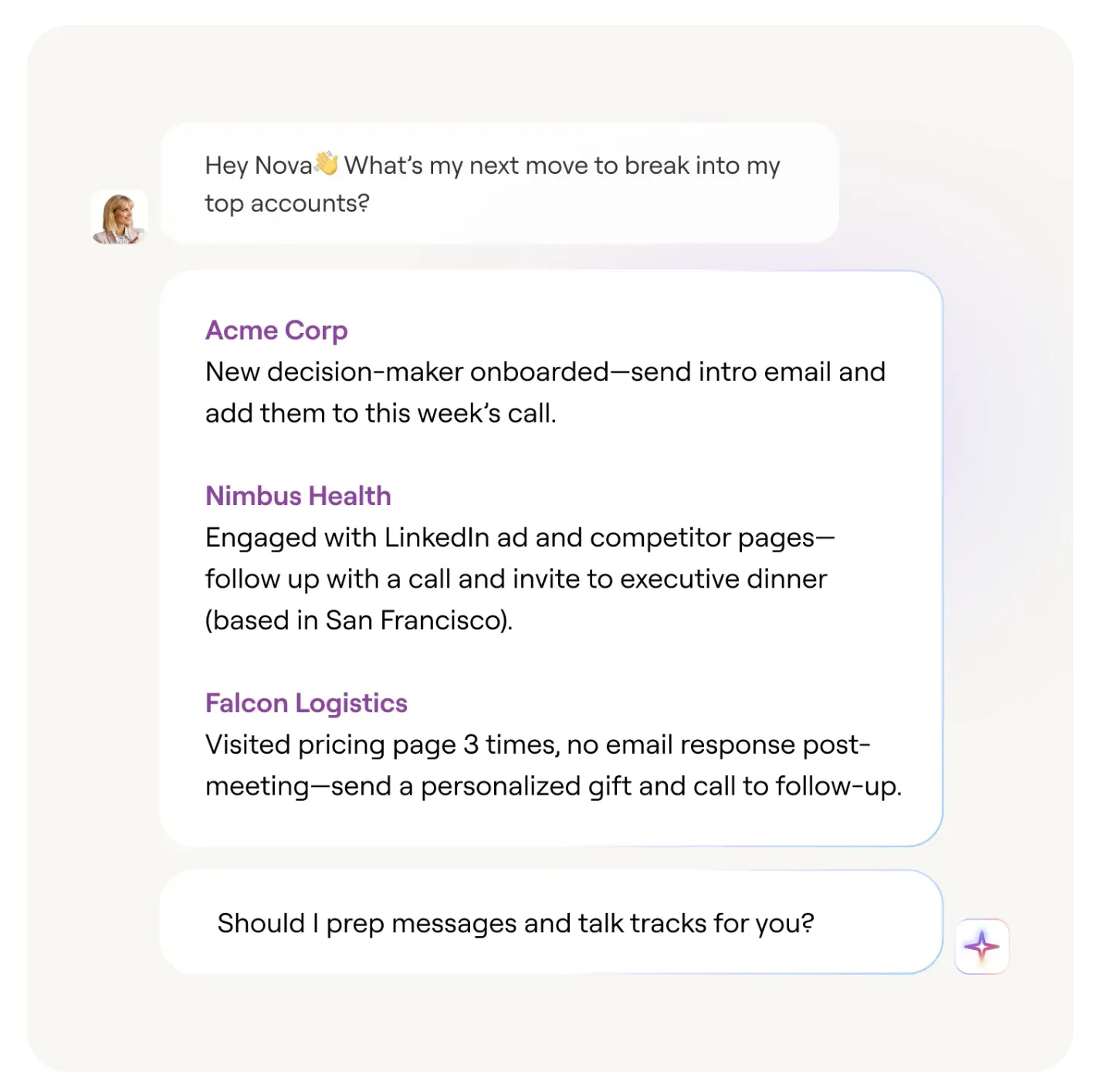
Imagine a workflow that automatically identifies a high-intent website visitor, researches their company, finds the right decision-maker, qualifies them, and then syncs them directly into a sales sequence—all without a single human touch. That's the power of a unified data platform combined with a true automation engine.
Stop stitching tools together and doing GTM manually. Start building a real revenue engine with HockeyStack.
See it for yourself. Play with our interactive demo now.
FAQs
How is a GTM workflow different from an automation sequence in my CRM?
Workflows in your CRM or marketing automation platform are powerful, but they're stuck in a silo. A HubSpot workflow can't easily trigger an action in Salesforce, and a Salesforce flow has no visibility into your ad platform data. A true GTM workflow is different because it's built on a unified data foundation and is designed to orchestrate actions across your entire tech stack. It's the "connective tissue" that makes all your other tools work together in a single, coordinated play.
What's the simplest, most valuable workflow a team should build first?
The best first workflow to build is one that solves your biggest point of friction between marketing and sales. For most companies, this is the lead routing and enrichment process. Start by building a simple workflow that takes a new high-intent signal (like a demo request), automatically enriches the lead with firmographic data, and routes it to the correct sales rep in Slack with all the context in under five minutes. It's a quick win that immediately demonstrates value to both teams.
Do I need a developer to build and manage these workflows?
Not for a modern platform. While older automation tools often required technical expertise, a modern GTM AI platform should have a no-code, drag-and-drop interface. The goal is to empower GTM leaders and RevOps teams to build and modify their own plays without needing to write a single line of code or wait for a developer.
How do you get sales and marketing to agree on a shared, automated workflow?
You get them to agree by focusing on the shared data and the shared goal: creating a more efficient path to revenue. Start by using a unified data platform to show both teams the actual customer journey and where the current handoffs are failing. When you frame the new workflow as a data-backed experiment to close more deals faster (which benefits both teams), it stops being a political debate and becomes a strategic collaboration.
What's the difference between a GTM workflow and a tool like Zapier?
Zapier is a fantastic tool for connecting two apps with a simple, linear "if this, then that" trigger. It's great for task automation. A GTM workflow is different because it's built for strategic orchestration. It's designed to execute complex, multi-step GTM plays that are based on a deep, unified understanding of your customer data. While Zapier can move a contact from one list to another, a GTM Workflow can identify a high-intent account, enrich it with data, score it, and trigger coordinated actions across your sales, marketing, and advertising platforms all at once.
How do we measure the success of an automated workflow?
You measure it by tracking its direct impact on core GTM metrics, not just activity. A successful workflow should result in a tangible improvement that you can see on a dashboard, such as:
- A decrease in the time it takes to move a lead from creation to a sales conversation (Pipeline Velocity).
- An increase in the conversion rates for leads that went through the automated workflow.
- A measurable lift in marketing-influenced pipeline or revenue.
GTM AI Strategies for SaaS: The New Standard for Predictable Growth
The complete guide to AI GTM strategies for B2B SaaS. Learn how to identify high-intent accounts, automate workflows, and predict churn before it happens.


Ready to see HockeyStack in action?
HockeyStack turns all of your online and offline GTM data into visual buyer journeys and dashboards, AI-powered recommendations, and the industry’s best-performing account and lead scoring.
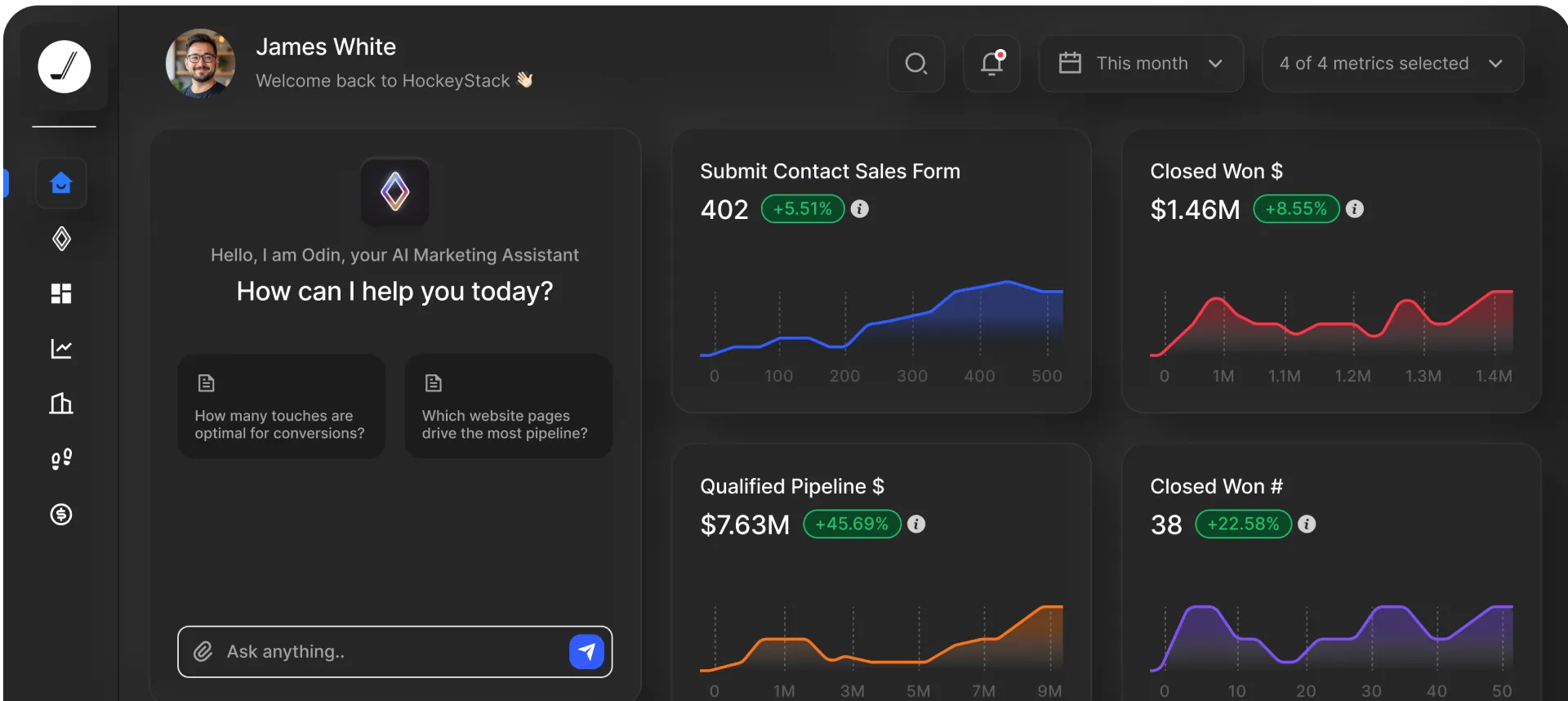
Ready to See HockeyStack in Action?
HockeyStack turns all of your online and offline GTM data into visual buyer journeys and dashboards, AI-powered recommendations, and the industry’s best-performing account and lead scoring.




